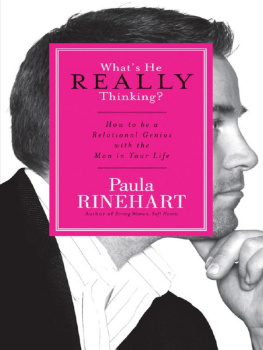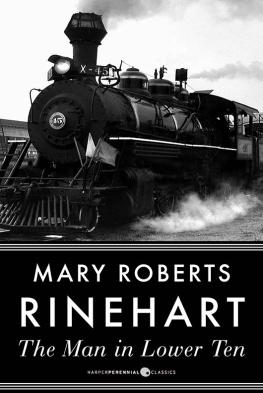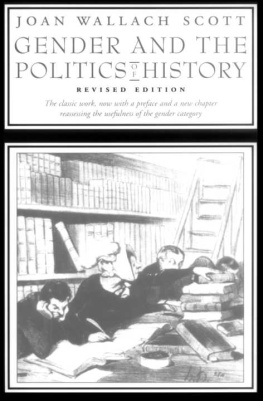Published in 1992 by | Published in Great Britain by |
Routledge | Routledge |
711 Third Avenue, | 2 Park Square, Milton Park, |
New York, NY 10017 | Abingdon, Oxon OX14 4RN |
Routledge is an imprint of the Taylor & Francis Group, an informa business
Copyright 1992 by Routledge, Chapman and Hall, Inc.
All rights reserved. No part of this book may be reprinted or reproduced or utilized in any form or by any electronic, mechanical or other means, now known or hereafter invented, including photocopying and recording, or in any information storage or retrieval system, without permission in writing from the publishers.
Library of Congress Cataloging in Publication Data
Rinehart, Sue Tolleson.
Gender consciousness and politics / Sue Tolleson Rinehart.
p. cm.(Perspectives on gender)
Includes bibliographical references and index.
ISBN 0-415-90684-9.ISBN 0-415-90685-7 (pbk.)
1. Women in politicsUnited States. 2. Feminist theory. 3. WomenUnited StatesSocialization. 4. Political socializationUnited States. 5. Gender identityUnited States. I. Title.
II. Series: Perspectives on gender (New York, N.Y)
HQ 1236.5.U6R56 1992
305.4201dc20
92-8240
CIP
British Library Cataloguing in Publication Data Available on Request
TABLES
Percentage of women who feel close to groups, 19721988, by race.
The strength of womens gender identification, 19721988: Percentage in each category, for all women and by race
Womens propensity to feel close to groups in society by category of gender identification, 19721988
Demographic position across categories of gender identification, 19721988
Lifespace position across categories of identification, 19721988
Generational or period effect? Percentage of women in each age cohort with close or closest gender identification, 19721988
Womens share of earned degrees conferred, by level of degree
Socialization environment across categories of gender identification, 19721988
Education as environment: Percentage of women in each educational group who identify closely or most closely with women, 19721988
Percentage difference in housewives and all womens gender identification, 19721988
Significant factors determining womens gender identification, 19721988
Gender identification and beliefs about womens roles, 19721988
Distributions across gender identification/role ideology categories, 19721988
Distributions across categories of gender identification/role ideology for white women and women of color, 19721988
Mean feeling thermometer scores for women, by category of gender consciousness, 1976, 1984, 1988
Perceptions of womens influence in American life and politics by category of identification/role ideology, 1972 and 1976
Mean feeling thermometer scores for the womens liberation movement or feminists, 19721988, and for Geraldine Ferraro, 1984, by category of identification/role ideology
Percentage of approval of the Equal Rights Amendment, by category of identification/role ideology, 1976 and 1980
Percentage of each category of identification/ideology for each direction and degree of salience of beliefs about governments responsibility to women, 1984
Beliefs about abortion, by consciousness, 19721988
Gender consciousness and religiosity, 19801988
Gender consciousness and morality, 1988
The scale of moral traditionalism, 1988
Attitudes toward abortion regressed on gender identification, gender role ideology, religiosity, and moral traditionalism, 1988
Demographic position across categories of identification/role ideology, 19721988
Lifespace: Age and generation, 19721988
Lifespace: Marital status, 19721988
Percentage difference in housewives and all womens distributions across gender consciousness categories, 19721988
Past and present socialization environments, 19721988
Factors significantly associated with womens position in the categories of gender consciousness, 19721988
Percentage frequency distriubtions of the political engagement scale, all respondents, 19721988
Mean scores on political engagement scale, 19721988
Gender consciousness and psychological resources, 19721988
Gender consciousness and participatory acts, 19721988
Correlations of sex, identification, and role ideology with components of the political engagement scale, 19721988
Correlations of sex, gender identification, and gender role ideology with political engagement, 19721988
Gender consciousness, socialization, and structural factors, 19721988
Percentage frequency distributions and scalability of policy scales, all respondents, 19721988
Mean scores on policy scale for whole sample, all men, all women, and for consciousness and its components, 19721988
How many policy positions are taken? Women only, 19721988
Gender consciousness and ideological self-identification, 19721988
The influence of gender consciousness on domestic and economic policies
The influence of gender consciousness on presidential vote choice and most important problems, 19721988
Defense spending, war, and international affairs, 19721988
Correlations of the components of consciousness with ideological self-placement and policy positions, 19721988
The association of components of gender consciousness with the policy scale, alone, and controlled for ideology, 19721988
The influence of components of consciousness on the association of political engagement and policy preferences, 19721988
FIGURES
Percentage with egalitarian position on equal roles, 19721988
Womens actual and recalled equal roles positions, 1973 and 1982
Mean levels of political engagement
Mean scores on policy scale
This work has preoccupied me for years, from its conception in some ephemeral questions while I was writing a dissertationquestions that, while they could not be addressed in that project, continued to haunt meto its fragile gestation, first haltingly announced in a convention paper presented to the Annual Meeting of the Midwest Political Science Association in 1988. Although the thinking there was not yet complete and the empirical analysis benefited from criticism, colleagues nonetheless awarded the Midwests Breckenridge Prize to that paper. That vote of confidence in my ideas was invaluable to me.










